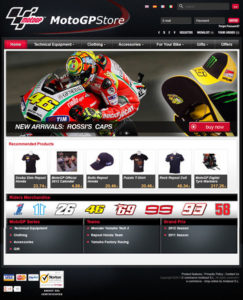Excerpts from my latest article at Practical eCommerce: “SEO: Identifying the Impact of a Site Redesign,” part one of a two-part series on identifying, assessing, and mitigating the risk of site redesigns on organic search traffic.
Site redesigns can create a period of intense instability for organic search traffic. Predicting which areas of the site will be most vulnerable to that instability and creating an SEO launch strategy to mitigate the risk in those areas decreases both the length and the intensity of the disruption to organic search traffic.
Hasbro’s anxiety-laden board game “Perfection” comes to mind when I think of redesigns. The game features a spring-loaded playing surface and a variety of plastic shapes. To begin playing, you push the blue, spring-loaded tray down and set the embedded timer. Then you have 60 seconds in which to accurately place all of the little yellow pieces into the matching holes in the tray. If you fail to place them all in 60 seconds, the tray springs up with an awful suddenness, spraying plastic pieces all over the place. I hated that game.
A redesign is not unlike that moment of sudden change at the end of the game Perfection. When a site redesigns, a number of elements that search engines use to determine the relevance and authority of the pages on a site tend to change suddenly and all at the same time. The world of a site as the search engines know it is suddenly different and must be carefully reindexed and analyzed algorithmically to determine its place in the rankings.
URLs typically change as pages are added and deleted, content is merged or split into new pages. The URLs that existed previously had some amount of authority and link popularity associated with them. When the URLs change, how that change is handled matters a great deal to the search engines, and thus to the organic search traffic the pages will drive after the redesign goes live.
Navigation is another major disruptor when a redesigned site launches. In addition to the URL changes that tend to accompany navigational changes, the flow of link juice throughout the site can be dramatically altered by just a few changes to the links included in the navigation. Categories may be merged together or split apart. Links to subcategory pages may be added or removed based on design constraints. Navigational labels may change so that the anchor text for the navigational links is different, sending different keyword signals across the site post-launch.
Keep in mind that not all navigation is found in the header and footer. Cross-linking features like tagging and related products also serve as navigation. Be sure to analyze changes to these features as well.
Finally, content that was plain text may be reworked into a less indexable format like images or video. Text is a dying component in modern web design, much to the detriment of organic search traffic. Designers and brands prefer the clean look of image-based content where fonts and other design elements can be controlled more easily. Unfortunately, without space in the template for a couple of lines of plain textual content, many sites risk becoming nearly mute in the redesign process, unable to send strong keyword relevance signals.
All of these changes, very common in site redesigns, send extremely disruptive signals to the search engine. The marketing and development teams have been planning the redesign for months, but literally overnight Googlebot and Bingbot are surprised with an entirely new site without any advanced warning. Helping the bots understand the changes quickly is the secret to mitigating the risk to the site’s organic search traffic.
Read the full article for tips on what questions to ask designers and developers, how to identify the SEO-critical changes in a redesign project and more at Practical eCommerce: “SEO: Identifying the Impact of a Site Redesign.”

Originally posted on Web PieRat.


 Every now and then an ecommerce site raises its hand for an “SEO Report Card” at Practical eCommerce. It’s a great way for the site to get some free advice and a good link, and an interesting way to give Practical eCommerce readers some, well, practical tips on how we’d handle SEO challenges with real ecommerce sites. Today’s volunteer is the
Every now and then an ecommerce site raises its hand for an “SEO Report Card” at Practical eCommerce. It’s a great way for the site to get some free advice and a good link, and an interesting way to give Practical eCommerce readers some, well, practical tips on how we’d handle SEO challenges with real ecommerce sites. Today’s volunteer is the 